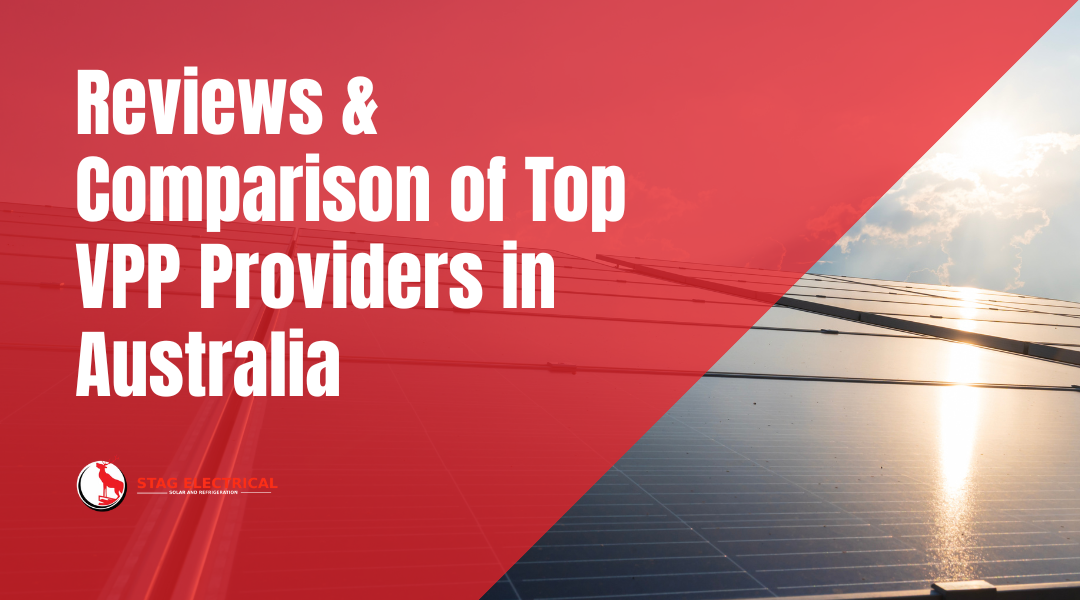As rooftop solar and home battery adoption grows across Australia, Virtual Power Plants (VPPs) are becoming an increasingly attractive way for homeowners to optimise their energy usage, earn additional income, and support the grid. A VPP is a network of distributed energy resources – usually home solar PV systems and batteries – that are coordinated to provide services to the electricity grid. This 2025 guide reviews major VPP providers in Australia, compares their features, and explains what to consider when choosing the best VPP for your home.
What Is a Virtual Power Plant (VPP)?
A Virtual Power Plant allows your home battery to be part of a larger energy network. Instead of simply storing surplus solar energy for personal use, a VPP can:
- Dispatch energy to the grid during peak demand.
- Provide households with payments or bonus feed-in rates.
- Integrate with solar PV systems, home batteries, and sometimes electric vehicle chargers.
- Contribute to grid stability and renewable energy adoption.
By participating, homeowners can earn extra income or reduce electricity bills, depending on their system size, location, and VPP structure.
Key Features to Consider in a VPP
Before reviewing providers, it’s important to understand the key aspects that differentiate VPPs:
- Retailer Lock-In: Some VPPs require you to switch your electricity provider, while others operate independently.
- Battery Control: How much of your battery is reserved for the VPP versus home use.
- Payment Structure: Fixed daily payments, event-based payouts, wholesale market participation, or bonus feed-in rates.
- Hardware Compatibility: Whether the VPP works with your existing battery and inverter system.
- Contract Terms: Duration, exit fees, and flexibility for future upgrades.
- Regional Incentives: Some states offer rebates or bonuses for VPP participation.
Integration with Solar and EVs: How the VPP works if you have or plan to install an EV charger.
Reviews of Major Australian VPP Providers
Below are detailed reviews of the main VPPs currently available in Australia, highlighting their features, benefits, and limitations.
1. Amber Energy – SmartShift
Overview: Amber Energy allows homeowners to participate in the wholesale electricity market using their battery and solar system.
Best For: Homeowners with a sufficient battery size who want flexibility and the potential for higher earnings.
2. Discover Energy VPP
Overview: Discover Energy’s VPP offers a fixed feed-in rate combined with bonus trading payouts.
Best For: Homeowners who value predictable income and are comfortable switching providers.
3. AGL VPP
Overview: AGL’s VPP is a retailer-backed program that uses battery energy during event days to support the grid.
Best For: Current AGL electricity customers looking for easy participation.
4. SolarHub VPP
Overview: SolarHub operates primarily in ACT/NSW, integrating with local installers and offering region-specific incentives.
Best For: Residents in ACT and NSW who want local VPP integration.
5. Synergy Battery Rewards (WA)
Overview: Synergy is a state-backed program in Western Australia, providing rebates and VPP participation for eligible battery owners.
Best For: WA homeowners eligible for rebates who want guaranteed participation.
6. SonnenConnect
Overview: Sonnen’s VPP operates with sonnenBatterie systems across several states.
Best For: Homeowners already using sonnen batteries.
VPP Comparison Table (2025 Snapshot)
How to Choose the Right VPP for Your Home
- Assess Your Battery & Solar System – Check compatibility and size.
- Decide on Control vs Predictability – Do you want maximum upside or guaranteed income?
- Check Regional Availability – Some VPPs are state-specific.
- Understand Fees & Lock-Ins – Ensure you are comfortable with monthly fees or retailer requirements.
- Consider Future Expansion – If planning an EV or battery upgrade, choose a flexible VPP.
Recommendation
While many VPPs have advantages, Amber stands out for homeowners who value flexibility and the potential for higher earnings. With no retailer lock-in, full control over your battery reserve, and transparent wholesale pricing, Amber is a strong choice for homes with solar and battery systems looking to maximise both grid support and personal benefit.
Virtual Power Plants are transforming how homeowners use solar and battery energy in Australia. Choosing the right provider depends on your battery system, preferred level of control, payment structure, and region. By carefully comparing providers and understanding each program's benefits and limitations, you can ensure your VPP participation aligns with your energy goals.
Ready to Explore VPP Participation?
If you have a home solar battery and are considering joining a VPP, contact Stag Electrical. Our team can assess your system, explain VPP options, and help you choose the right provider to maximise savings and energy efficiency.




